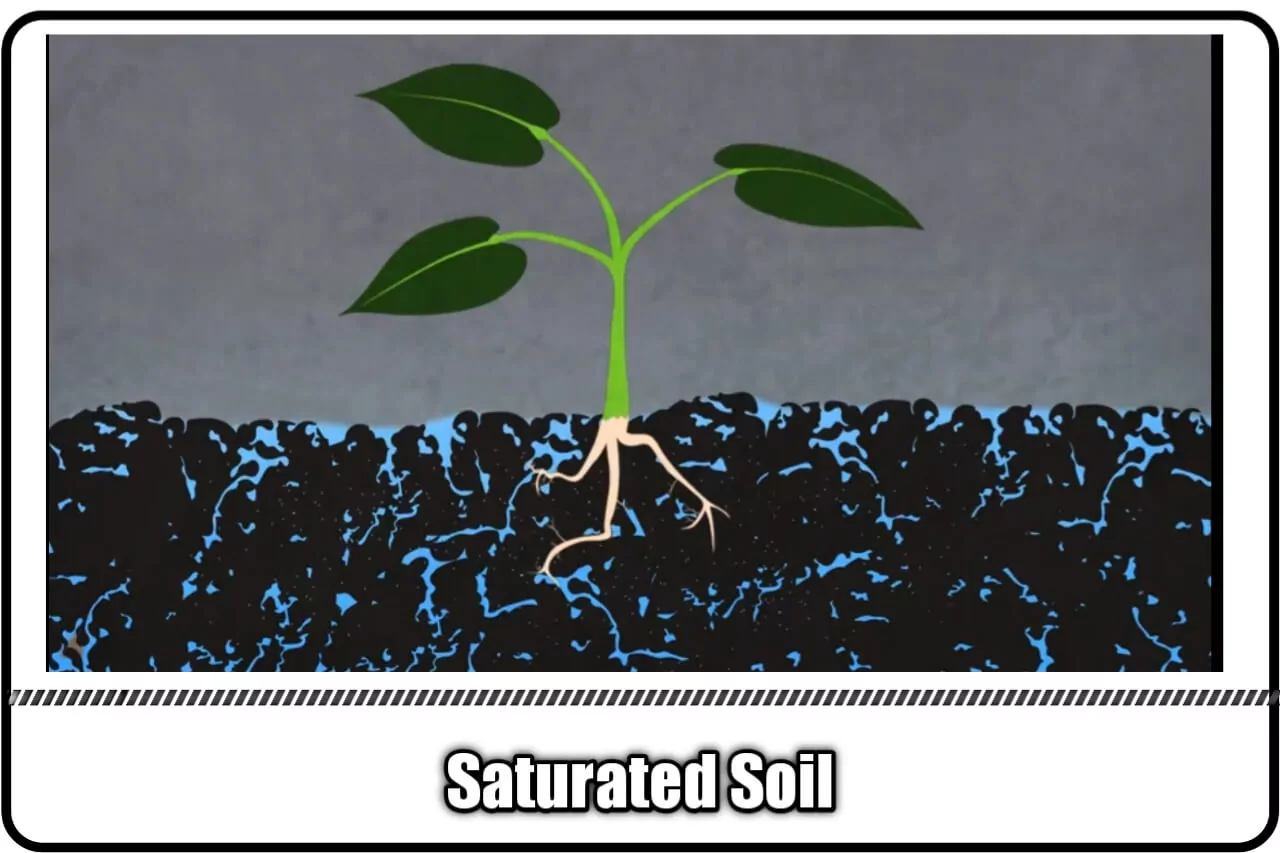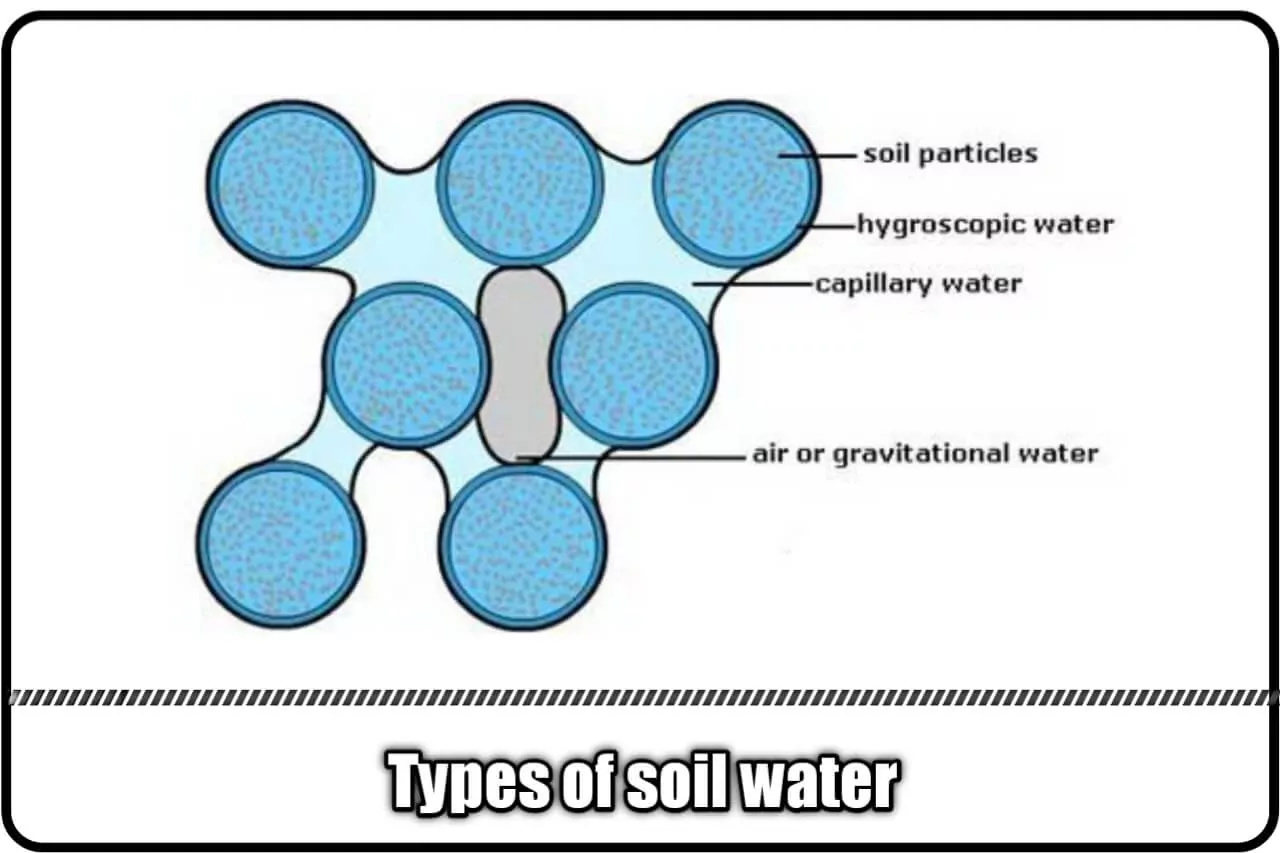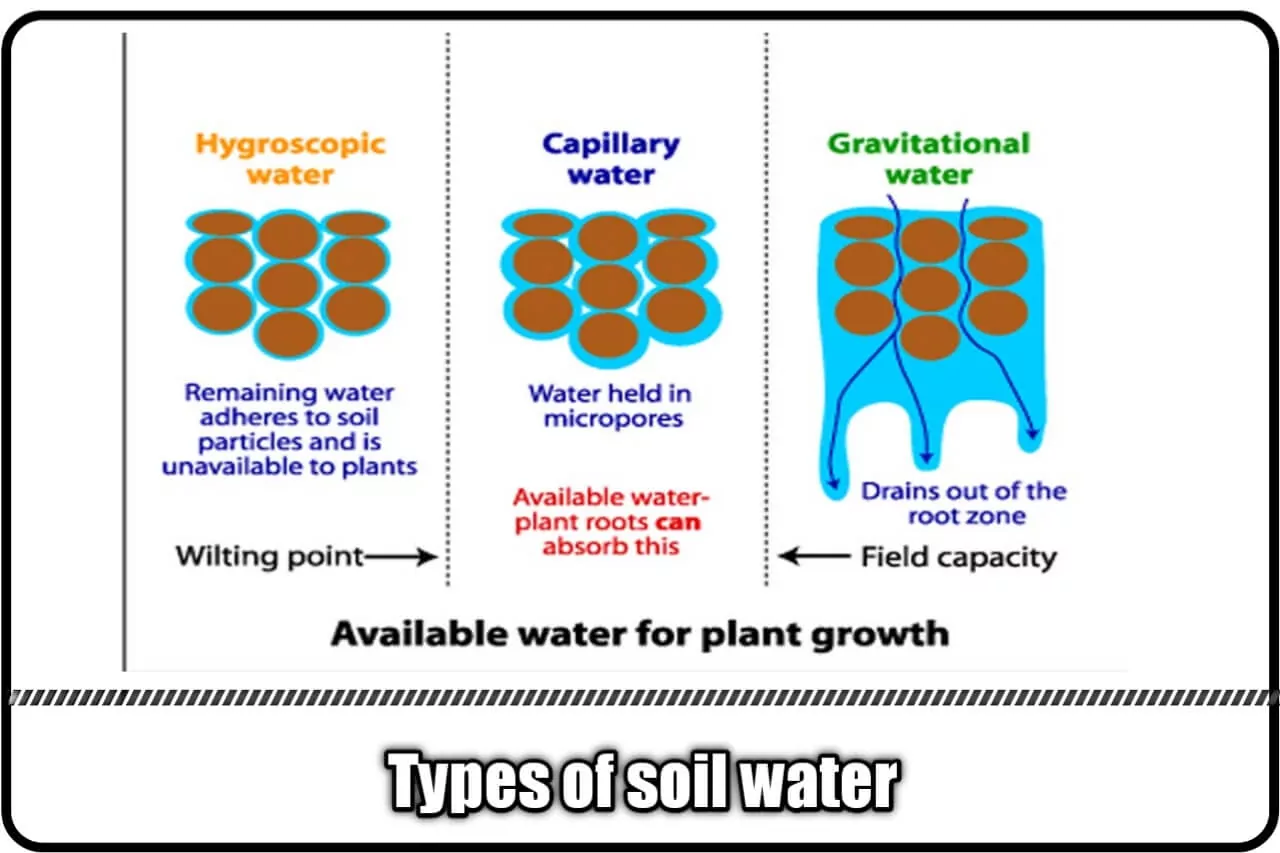In this article we will study What is Soil Water Plant Relationship ? , its importance, types of soil water in the soil, and what are the important criteria of soil water plant relationship ?
What Is Soil Water Plant Relationship ?

The soil provides a structural base to the plants. It allows the root zones of the plants to get firmly embedded in it. Thus the soil act as a foundation for the plants. Further, the soil stores water and nutrients required by the plants for their growth.
The soil water plant relationship includes the capacities of the soils to retain water, the use of this water by the plants, and the movement of the excess water through the soils. The water retained by the soil is used by the plants through their roots.


Water is required by the plants in a small quantity for the metabolism and for the transportation of the nutrients. However, a much larger quantity of water is required for the physiological process of transpiration which protects the plants from the injurious effects of high temperature. A quantity of water is also required for evaporation. Thus,
The total quantity of water required by plants
= Consumptive use of water
= evaporation + transpiration
= evapotranspiration
Water is required for the life of plants and the germination of seed. Moreover, the chemical processes within the plants take place in an aqueous solution for which water is needed. Water is also required for the photosynthesis process in the presence of sunlight.
The nutrients required by the plants are normally present in the soil in the form of salts. If the soil is deficient in any of these nutrients, it may be supplemented by the use of fertilizers. Water in the soil forms a salt solution by dissolving the salts. The roots of the plants absorb this salt solution by the osmotic action which induces a pressure from a weaker (dilute) salt solution towards a stronger (concentrated salt) salt solution.

Within the plants, the salt solution is relatively concentrated due to the loss of water from the leaves by transpiration. It is, therefore, essential that sufficient water is retained by the soil to make the salt solution dilute enough to enable the plants to readily use it. Because soil is capable of retaining a limited amount of water and that too goes on depleting due to evaporation and transpiration, it needs to be replenished by irrigation at some interval.

In addition to water, air must also be present in the root zone for the respiration of the microorganisms. It also provides a favorable environment for the development of roots and the absorption of nutrients. For the proper circulation of air, the soil should not remain saturated. Therefore, excess water must be drained out from the soil to enable free air circulation in the root
zone

For proper growth of the plant’s requisite quantities of water, air and nutrients must be available in the root zone. Therefore while practicing irrigation it must be ensured that these quantities are available in the root zone in requisite proportions. so the soil water plant relationship gives an idea about the requirement of water, its permanent welting point, ultimate welting point, and many other things.


Classification of soil water
The water added to a soil mass during irrigation or otherwise is held in the pores of the soil mass, which is termed as Soil water or Soil moisture. The soil water may be classified in the following three categories. In soil water plant relationship classification of soil water play a vital role so let’s discuss all classification of soil water.
- Gravitational water
- Capillary water
- Hygroscopic water
1. Gravitational water :
The gravitational water is that portion of the total water in the soil which is free to move under gravity. It is that water which is not held by the soil but drains out freely under gravity.
This water occupies the large pores in the soil. As the water is added to the soil, the amount of gravitational water increases. The upper limit of the gravitational water occurs when the soil is fully saturated. The water content at that stage is known as the saturation capacity.

2. Capillary water :
The water content retained in the soil after the gravitational water has drained off from the soil is known as capillary water. It is held in the soil by surface tension in the form of film around the soil particles. It is not free to move under gravity.
The plant roots gradually absorb the capillary water and the water content of the soil decreases. In fact, it is the principal source of water for plants. Therefore, the capillary water is designated as available water.

3. Hygroscopic Water :
The hygroscopic water is that water which is absorbed by the dry soil particles from the atmosphere. It is held as a very thin film around the soil particles. It is held due to adhesion or attraction between the surface of the soil particles and water molecules.
An air-dried soil will contain hygroscopic water. Since hygroscopic water is held with considerable force, it can not be removed easily from the soil particles. However, if the soil is heated up to 105°C in an oven, the hygroscopic water is removed.
Hygroscopic water is not available to plants. Thus, it is also known as unavailable water. Based on the availability of soil water to plants, water may also be classified as under.
- Un-available water
- Available water
- Superfluous water
1. Un-available water :
It refers to hygroscopic water which is not available to plants due to its in ability to move under gravity or capillary forces. It is the soil moisture held so firmly by molecular forces that it can not ordinarily be absorbed by plant roots for their growth.
2. Available water :
It refers to the capillary water which is readily available to the plant roots for plant growth. Plants wilt if the capillary water is used up. The available water in the capillary water zone is limited up to a permanent wilting point and accordingly it forms the line of demarcation between the capillary water and hygroscopic water.
3. Superfluous water :
It refers to the gravitational water which drains down so deeper that plant roots can not draw it.
Extraction pattern of soil moisture in root zone :
Again, extraction of soil moisture is important parameter of soil water plant relationship. A plant extracts the maximum moisture from the upper layers of the soil in the root zone. The moisture extraction pattern indicates the relative amounts of moisture extracted by the plant roots from different depths in the root zone.

Fig. shows the moisture extraction pattern of most of the plants growing in deep uniform soils with an adequate supply of water. It may be observed that about 40% of the total moisture used is extracted from the first quarter of the root zone, 30% from the second quarter, 20% from the third quarter, and only 10% from the fourth quarter. The larger extraction of moisture from the upper layers is due to the fact that in a uniform soil generally greater root development takes place in the upper layers of the soil than elsewhere.
Soil – moisture contents :
Soil moisture content:
The amount of water present in a soil is termed as soil moisture content. It is expressed as ’mm’ of water depth present in 1 m depth of soil.
Saturation capacity :
It is the amount of water required to fill all the pore spaces between soil particles by replacing all air held in pore spaces. It is also known as maximum moisture holding capacity.
It is the upper limit of possible moisture content. It is expressed as equivalent ’em’ of water per metre of soil depth. Thus if the porosity of a soil is 60% by volume, the moisture in each metre of saturated soil is equivalent to depth of 60 cm on the field surface.
Field capacity :
The field capacity is the moisture content of the soil after free drainage has removed most of the gravity water.

It is usually expressed as the weight of the maximum amount of water held by the soil against gravity per unit weight of the dry soil and is given as a percentage.
Field capacity is the upper limit of the capillary water or the moisture content available to the plant roots.

Permanent wilting point:
permanent wilting point is an important parameter for soil water plant relationship. The permanent wilting point or the wilting coefficient is that water content at which plants can no longer extract sufficient water from the soil for its growth. The permanent wilting point is at the lower end of the available moisture range. If the plant does not get sufficient water to meet its needs, it will wilt permanently.

The permanent wilting point is usually expressed as the weight of the moisture held by the soil per unit weight of the dry soil when the plants are permanently wilted.

Permanent wilting points differ widely for different soils but have approximately the same values for different plants grown on the same soil. The value of permanent wilting percentage may be as low as 2% for light sandy soils and it may be as high as 30% for heavy clay soils.
Temporary wilting :
Temporary wilting of plants usually occurs on a hot windy day, but the plants recover from wilting in the cooler portion of the day or during the night without any addition of water to the soil. Thus, temporary wilting of plants may occur even without much reduction in the soil moisture content.
Ultimate wilting :
Ultimate wilting of plants occurs when they become completely wilted and dead. After ultimate wilting has occured, the plants do not recover from wilting even after the addition of water to the soil.
The water content at which ultimate wilting occurs is termed as ultimate wilting point. When it is expressed as a percentage, it is called hygroscopic coefficient. The average value of the hygroscopic coefficient is about 67% of the permanent wilting percentage.
Available moisture :
The difference in the moisture content of soil between the field capacity and the permanent wilting point is called the available moisture.
It refers to the capillary water which is used by the plants for their growth.

Soil – moisture deficiency :
Soil – moisture deficiency or field moisture deficiency is the water required to bring the soil moisture content of the soil to its field capacity.
Soil moisture tension :
The force per unit area that must be exerted in order to extract water from the soil is known as soil moisture tension.
It is also known as capillary potential or capillar tension or force of suction. It is expressed in terms of atmosphere (atm).
For a soil of given texture and structure, soil moisture tension is inversely proportional to its moisture content. Thus, at the permanent wilting point, the moisture content of the soil is very low and it is held by the soil with such a tenacity that the corresponding soil moisture tension is in the range of 7 to 32 atmospheres for all soils, and hence it cannot be extracted by the roots of the plants.
Field Capacity, Permanent wilting Point, And available Moisture For Types of Soil


I Hope You Like Our Article “Soil Water Plant Relationship Step By Step Explained |2020|” Don’t be Cheap To Share This Article with your Friends.
READ MORE
1) 10 Types of Parking And How To carry Out Parking Study In Traffic Engineering ?
2) TRAFFIC VOLUME STUDY: How To Carried Out 10 Traffic Volume Studies In Traffic Engineering
3) All 15 Modern Types of Irrigation|Methods of Irrigations|2020|

